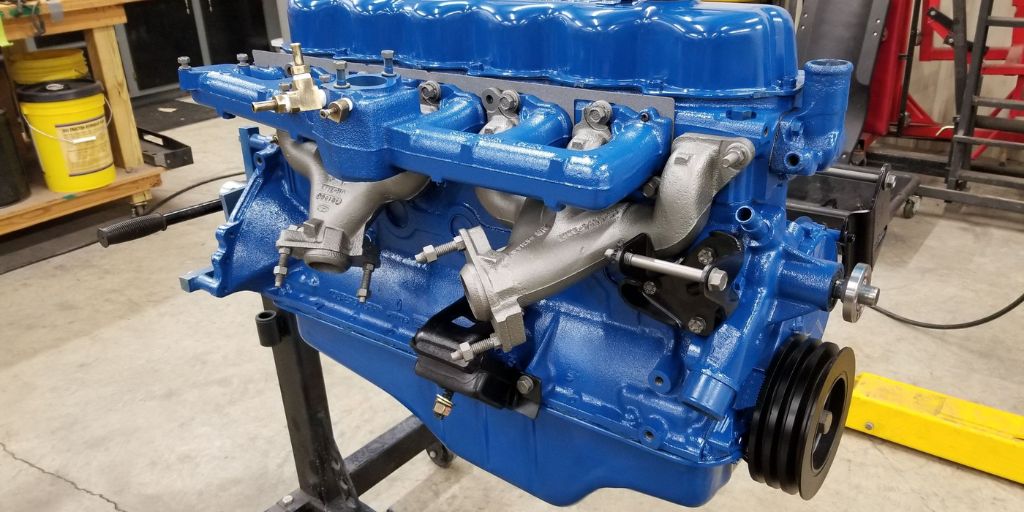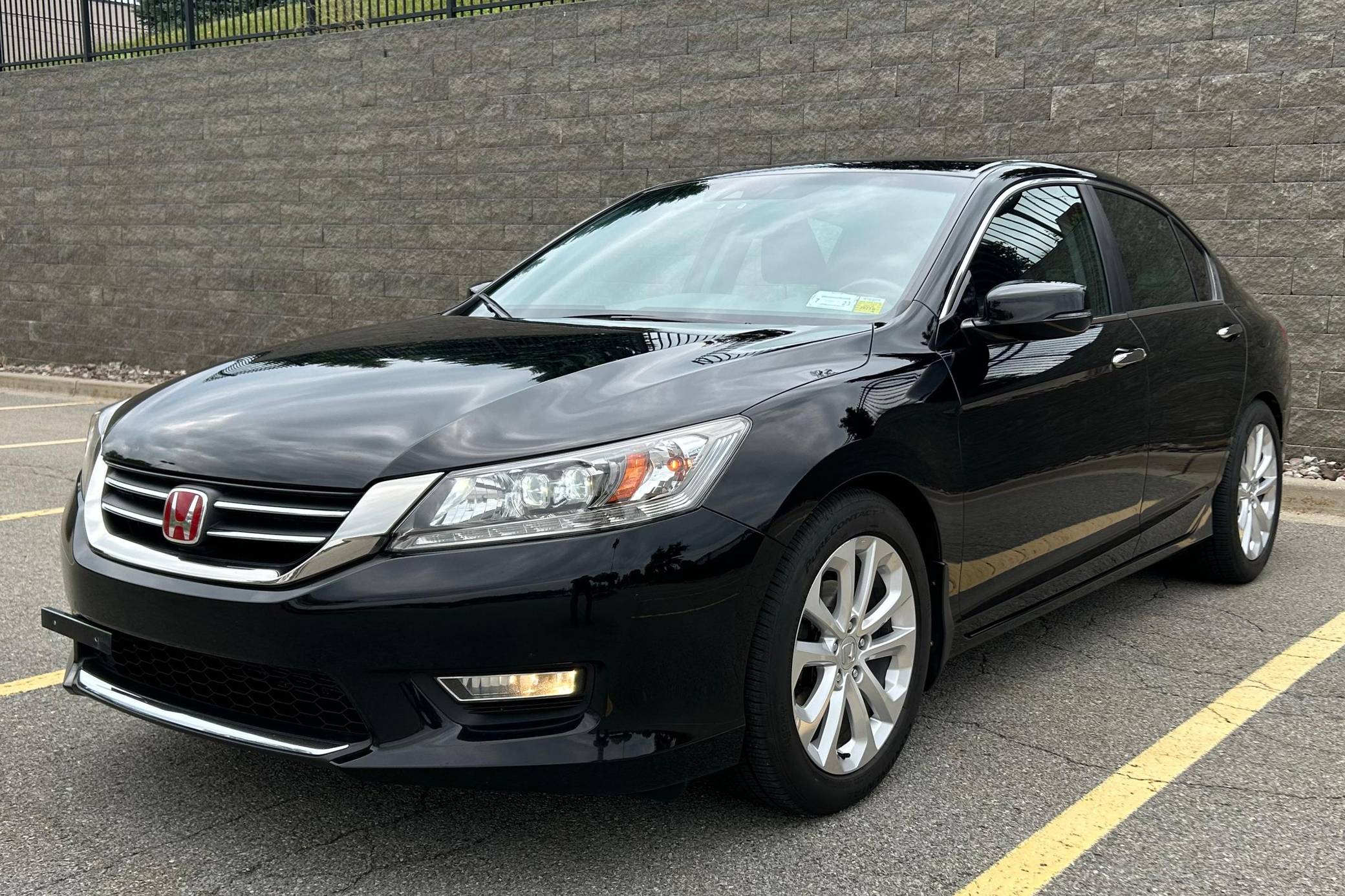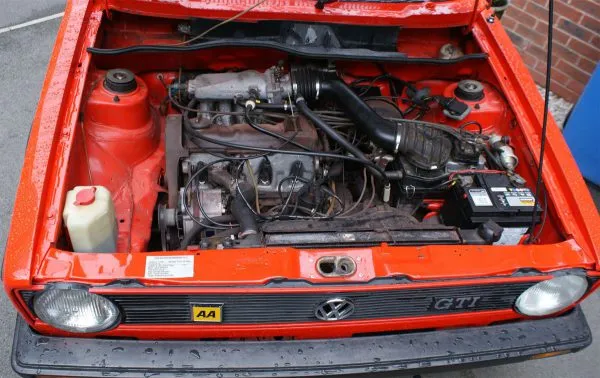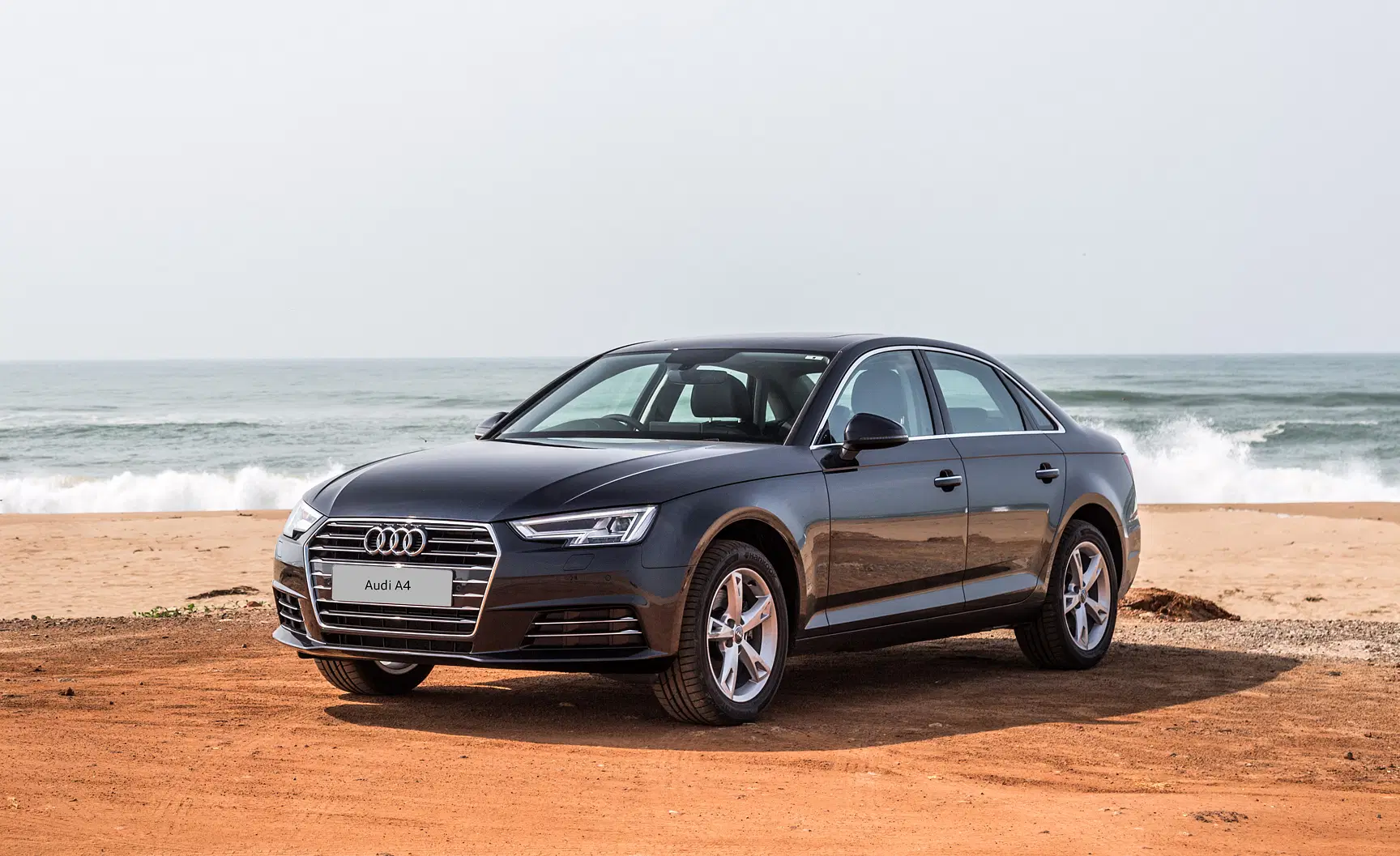When it comes to car ownership, the way an engine is designed can make a significant difference—not just in performance, but in how manageable it is when repairs or maintenance are needed.
For those who prefer DIY work or simply want to avoid high service costs, engine serviceability is a vital but often overlooked factor. Some engines are laid out with clear logic and accessibility, making common tasks like spark plug changes, belt replacements, and sensor swaps straightforward.
These engines save time and money over the life of the vehicle and make routine upkeep far less intimidating.
On the opposite end of the spectrum are engines so tightly packed and intricately designed that even the simplest repairs can become multi-hour jobs.
In some modern vehicles, replacing a water pump or alternator means removing the front bumper, radiator support, and sometimes the entire front clip. These engines might deliver power and efficiency, but they punish owners when it’s time for service.
This article explores five engines that are refreshingly easy to service and five that require extensive disassembly of the front end for even basic maintenance. Whether you’re buying a new car or evaluating a used one, understanding the layout of the engine can save you thousands down the road.
Also Read: 5 Cars With Easily Accessible Spark Plugs And 5 That Take Hours To Change
5 Engines That Are Easy To Service
Not all engines are created equal—especially when it comes to serviceability. Some are so well laid out that they seem to invite you under the hood, making even amateur mechanics feel empowered.
These engines are designed with simplicity in mind, with smart packaging, accessible components, and minimal interference from surrounding systems. Whether you’re changing spark plugs, belts, hoses, or sensors, these setups often allow for quick, tool-friendly access that saves time and money.
The trend of designing easy-to-service engines is rooted in practicality. Cars built for the masses—particularly older Japanese compacts, work trucks, and certain base-model sedans—frequently prioritize ease of maintenance.
Automakers know that keeping service costs low extends vehicle life and improves customer satisfaction. Additionally, in rural or fleet-heavy markets, the ability to service a vehicle quickly with basic tools can be a major selling point.
In this section, we’ll highlight five engines across various segments and brands that stand out for their ease of service.
These are not necessarily the most powerful or technologically advanced engines, but they offer user-friendly layouts that reduce labor time and keep long-term ownership costs in check.
From roomy engine bays to logical component placement, these engines show that functionality doesn’t have to be sacrificed in the name of performance.
We’re focusing on engines where routine maintenance can be performed without lifting the car, removing major body parts, or investing in specialty tools. This is valuable information for DIYers and cost-conscious owners alike.
If you’re shopping for a reliable used car or considering what to keep in your driveway for years to come, these engines offer more than just reliability—they offer peace of mind every time that check engine light comes on.
1. Toyota 1ZZ-FE (Found in 1998–2008 Corolla and Matrix)
The Toyota 1ZZ-FE engine is a four-cylinder, 1.8-liter powerplant that powered several Toyota models, most notably the Corolla and Matrix from the late 1990s through the mid-2000s.
While it’s not known for performance thrills, it shines brightly in one important category: serviceability. This engine was designed with maintenance in mind, and it shows in every part of its layout.
At the top of the list is the spark plug access. Unlike many modern engines that bury plugs beneath intake manifolds or engine covers, the 1ZZ-FE uses a coil-on-plug setup with direct access.

Each plug can be changed with a simple 10mm socket and a spark plug socket—no removal of accessories or intake piping is required. An average DIYer can complete a spark plug job in under 30 minutes.
Oil changes, belt replacements, and coolant hose replacements are similarly straightforward. The serpentine belt is mounted high and exposed, with a clearly marked tensioner. This means no crawling under the car or removing splash shields.
Likewise, the oil filter is positioned right up front on the lower block, within arm’s reach from above or below. Even the thermostat, which on many cars is buried deep, is easily accessible just off the water outlet.
Another reason the 1ZZ-FE is a DIY favorite is its wide engine bay. Toyota wisely gave these compact cars ample clearance around the engine, meaning fewer scraped knuckles and less time wasted trying to wedge tools into tight corners. This open design also makes diagnosing issues—like vacuum leaks or sensor failures—much simpler.
But it’s not just ease of access. The 1ZZ-FE has a reputation for long-term reliability and minimal failure points. The timing chain never needs replacement, and the electronic throttle body rarely gives trouble.
In short, the 1ZZ-FE exemplifies Toyota’s conservative, logical engineering of the time. For owners who prioritize low-cost maintenance and long-term simplicity, this engine is one of the best choices on the used market today.
2. Ford 4.9L Inline-6 (Found in 1987–1996 F-150 and F-250)
The Ford 4.9-liter inline-6 engine, often referred to by its engine code “300,” is a legend among service technicians and truck enthusiasts alike.
Installed primarily in Ford’s F-series trucks from the late 1960s through the mid-1990s, the engine reached peak accessibility and simplicity in the 1987–1996 models.
Built with durability and ease of service in mind, it’s one of the last engines you’d ever call a “nightmare” under the hood.
One of the first things you’ll notice is the roominess of the engine bay. Because it’s an inline-6 configuration in a full-size truck, there’s open space on either side of the engine block and plenty of clearance above.
Everything from spark plugs to the distributor to accessory belts is completely exposed and reachable without crawling underneath or removing major components.

Spark plug access is textbook simple: six plugs arranged in a neat row on the side of the engine. With a socket wrench and 15 minutes, you’re done.
The fuel injectors, sensors, and throttle body sit at the top of the intake manifold, not buried behind covers or under strut bars. The oil filter is mounted horizontally along the passenger side, easily reachable from below with no obstruction.
Belts and the alternator are up front and easy to swap, and the water pump, while large, can be changed in a single afternoon with basic tools.
Because the engine design is so straightforward, diagnostic work is also simplified. Vacuum lines and wiring are minimal and well-labeled in most factory configurations.
Why does this matter today? Because used F-150s and F-250s with the 4.9L inline-6 are still on the road—and still getting fixed in driveways and barns across the country. Whether you’re a fleet owner, a weekend warrior, or just someone who likes turning a wrench, this engine won’t frustrate you with complex procedures or surprise labor costs.
The Ford 300 I6 isn’t the most refined or powerful motor ever made, but when it comes to long-term ownership and DIY repairability, it’s hard to beat. It’s the engine equivalent of a simple, reliable tool that never lets you down.
3. Chevrolet 5.3L V8 (Gen III Small Block, 1999–2013 Silverado and Tahoe)
The Chevrolet 5.3-liter V8 from the Gen III small-block family is one of the most popular and widely used engines in GM’s truck and SUV lineup.
Known for its blend of power, reliability, and affordability, this engine also stands out for its surprisingly easy serviceability compared to many modern V8s.
Under the hood, GM engineers kept the 5.3L layout fairly straightforward. Spark plugs are easy to reach because they’re arranged neatly on both cylinder banks, with coil packs that can be removed without hassle.
Unlike many newer engines where intake manifolds and complicated wiring harnesses obstruct access, the 5.3L’s setup allows for spark plug changes in under an hour for most DIYers.
Oil changes are similarly convenient: the oil filter is located front and center on the passenger side, accessible without any bodywork removal.
The serpentine belt system is user-friendly with a clear tensioner that can be released using a standard wrench or socket. Replacing belts, pulleys, and the alternator can be done in a couple of hours at most, even by home mechanics.
Another service-friendly feature is the intake manifold design. It is bolted on in such a way that, for most repairs, it can remain in place, saving time during valve cover gasket replacements or ignition coil swaps.

The 5.3L is also supported by a wealth of aftermarket parts and detailed online guides, making maintenance easier for beginners. Its enduring popularity means parts are cheap and widely available, so you won’t be stuck hunting down specialty components.
For owners who want a V8 with respectable fuel economy, good power, and an engine bay that doesn’t require a contortionist to service, the Chevrolet 5.3L is a standout choice.
It perfectly balances performance and service accessibility, making it a top contender for those who plan to do their own maintenance or want affordable repairs down the road.
4. Honda K-Series 2.0L (Found in 2002–2011 Civic Si, Accord, and CR-V)
Honda’s K-Series 2.0L engine is renowned for its blend of high-revving performance and reliability, but it also earns praise for its smart, service-friendly design.
Found in popular models like the Civic Si, Accord, and CR-V from the early 2000s through the early 2010s, this engine has become a favorite among DIY enthusiasts and mechanics for easy maintenance.
One of the key reasons the K-Series engine is easy to service is its straightforward layout and thoughtful component placement. Spark plugs are accessible without removing the intake manifold, thanks to coil-on-plug ignition with direct access from above.
This design allows plug changes in roughly 30 to 45 minutes, even for those with moderate mechanical experience.
The oil filter is positioned on the side of the engine block and is reachable from underneath the vehicle with minimal obstruction.
Oil changes, a routine but critical maintenance task, are quick and hassle-free. The serpentine belt and its tensioner are visible and accessible at the front of the engine, simplifying belt replacements.

Additionally, the valve cover and ignition coils are easy to remove, which speeds up tasks like gasket replacements or coil swaps. Compared to many other four-cylinder engines that require intake manifold removal for such jobs, the K-Series layout saves valuable time and effort.
Honda’s engineering also means that routine maintenance parts are widely available and affordable. The K-Series engine has been widely used in performance and daily-driving vehicles, leading to a strong aftermarket and extensive online resources for troubleshooting and repairs.
For owners who value a responsive, reliable engine with reasonable service demands, the Honda K-Series offers a winning combination. It balances accessible maintenance with strong performance, making it an excellent choice for both novice and seasoned DIY mechanics.
5. Subaru EJ25 (Found in 1996–2014 Legacy, Outback, Forester)
The Subaru EJ25 is a 2.5-liter horizontally opposed “boxer” engine that powered many of Subaru’s most popular models for nearly two decades.
While Subaru’s boxer design is unique, the EJ25 stands out for its relatively straightforward maintenance access compared to other modern engines with complex packaging.
One of the biggest advantages of the EJ25 is the accessibility of key service points. Spark plugs are positioned on the sides of the engine banks, and although working on the rear plugs requires more patience, they remain reachable without the need to remove the entire intake manifold or front-end components.
Many Subaru owners report that replacing all spark plugs is doable with basic hand tools and moderate mechanical skill.
Oil changes are straightforward thanks to the easily reachable oil filter mounted at the front of the engine and an oil drain plug that is easy to access from beneath the car.
The flat layout also means there is ample clearance around the belts and pulleys, making routine belt replacements simpler compared to tight V-shaped engines.
Furthermore, the EJ25’s timing belt is accessible with moderate effort, usually without needing to dismantle the front end. While some timing components may require partial disassembly, the job remains manageable for a skilled DIYer or professional mechanic without the need for specialized lifts or removing the bumper.

Subaru’s engine design, combined with a passionate owner community, means plenty of service guides and aftermarket parts are available, helping keep maintenance costs reasonable.
The EJ25 strikes a balance between unique engineering and practical serviceability, making it a favorite for those who want a distinct engine layout without a complicated maintenance process.
In summary, the Subaru EJ25 offers relatively easy access to common maintenance items despite its boxer engine design, making it one of the more service-friendly horizontally opposed engines on the market.
5 That Require Removing The Front End
While many modern engines are designed with serviceability in mind, some require far more extensive labor for routine maintenance and repairs.
In this section, we explore five engines notorious for the complexity involved in accessing key components—so much so that mechanics often must remove the vehicle’s entire front end just to reach spark plugs, timing belts, or other critical parts.
These engines serve as cautionary examples of how packaging decisions, tight engine bays, and advanced technology can dramatically increase service times and costs.
Removing the front end typically means dismantling the bumper, radiator, cooling fans, and sometimes even the headlights and air conditioning system.
This not only increases labor time but also raises the risk of damaging delicate components and inflating repair bills. Owners of vehicles with these engines often face longer shop visits and steeper bills, whether for basic tune-ups or more significant repairs.
The engines selected here span a range of manufacturers and vehicle types, but all share one frustrating trait: limited access to routine maintenance points.
Whether it’s buried spark plugs deep within the engine block or timing components hidden beneath multiple layers of ancillary parts, these engines challenge even experienced mechanics.
The complexity often deters DIY repairs, pushing owners toward costly dealership or specialty shop services.
Understanding which vehicles fall into this category is vital for prospective buyers and owners alike. By knowing which engines demand extensive disassembly for routine tasks, drivers can better anticipate maintenance costs and make more informed decisions about ownership and upkeep.
In the following detailed section, we’ll dive into five specific engines that exemplify this service challenge, exploring what makes their maintenance so difficult and why these choices matter for long-term ownership.
1. Volkswagen 2.0L Turbocharged TSI (EA888 Gen 3, 2012–2018 Models)
Volkswagen’s 2.0L Turbocharged TSI engine, particularly the EA888 Gen 3 version found in various VW and Audi models between 2012 and 2018, is a prime example of a modern engine that demands front-end removal for many routine maintenance tasks.
While this engine offers excellent performance and efficiency, its complex layout makes servicing anything beyond basic oil changes a headache.
The primary issue lies in the cramped engine bay combined with turbocharging hardware, extensive wiring, and multiple accessories packed tightly around the cylinder head. To access spark plugs or the timing chain components, mechanics often must remove the front bumper, radiator, and cooling fans.
This is necessary to create enough working space to safely reach and replace plugs without damaging the delicate turbocharger pipes or electrical connections.
Spark plugs themselves are located deep under the intake manifold and near the turbocharger assembly, hidden beneath heat shields and wiring harnesses.
Changing them requires removing multiple components in a precise order to avoid complications, which adds hours of labor to what would typically be a quick job. For DIY mechanics, this level of disassembly is daunting and generally discouraged.

Timing chain inspection or replacement is equally involved. The engine’s timing cover is positioned behind the front of the engine block, forcing removal of many front-end parts to gain access. Furthermore, the turbocharged setup means additional cooling and oil lines must be disconnected carefully to avoid damage.
This complex servicing process drives up labor costs significantly. Even simple repairs can become costly when factoring in the additional disassembly and reassembly time. For owners, the 2.0L TSI offers impressive power and fuel economy but at the expense of easier maintenance and repair accessibility.
In conclusion, the Volkswagen 2.0L Turbo TSI engine showcases how performance-oriented engineering can complicate routine service, making it a clear candidate for engines that require removing the front end for spark plug and major component access.
2. BMW N54 3.0L Twin-Turbo Inline-6 (2007–2010 Models)
BMW’s N54 3.0-liter twin-turbocharged inline-six engine, found in models such as the 335i and 135i from 2007 to 2010, is known for its strong performance but also for notoriously difficult maintenance that often requires front-end removal.
The tightly packed engine bay of BMW’s N54 leaves minimal room to access critical components such as spark plugs, ignition coils, and the timing chain.
The twin-turbo setup, combined with intricate cooling lines, wiring harnesses, and heat shielding, makes the front of the engine incredibly congested.
As a result, to perform spark plug replacement or timing chain repairs, mechanics frequently must remove the front bumper, radiator, cooling fans, and sometimes even the headlights.
Spark plugs are located deep within the cylinder head, covered by the intake manifold and turbo plumbing. This arrangement requires dismantling multiple systems just to gain access, significantly increasing labor time. The complexity deters many DIYers and often results in higher service bills at dealerships or specialty shops.

Furthermore, timing chain replacement—a well-known maintenance requirement for the N54—requires front-end removal to access the timing chain cover. This adds to the labor cost and time, often making this repair one of the most expensive on this engine.
BMW’s engineering aimed for compactness and performance but sacrificed service accessibility, especially compared to naturally aspirated or simpler engines. For owners, the N54 offers exhilarating power but at a premium when it comes to maintenance.
In summary, the BMW N54 is a high-performance engine that comes with the drawback of difficult, time-consuming service, often necessitating the removal of the vehicle’s front end for routine maintenance and repairs.
3. Audi 3.0L Supercharged V6 (C7 A6, 2012–2018 Models)
The Audi 3.0-liter supercharged V6 engine, notably found in the C7 generation A6 and some Q5 models from 2012 to 2018, is an engine that combines smooth power delivery with a frustratingly complex maintenance process.
Its packaging under the hood leads to one of the most challenging servicing experiences in the modern luxury sedan segment.
Key maintenance points such as spark plugs and ignition coils are buried beneath layers of components, including the intake manifold, supercharger assembly, and extensive wiring harnesses.
Unlike simpler engines where spark plugs are easily accessible from above, the Audi 3.0L requires dismantling significant front-end components to even reach the plugs.
For many routine repairs, mechanics often need to remove the front bumper, radiator, cooling fans, and sometimes even the front crash structure to create enough clearance for safe access.
This is especially true for tasks like spark plug replacement or timing chain service, which are critical yet labor-intensive due to the engine’s tight packaging.

The supercharger itself adds additional complexity. Its cooling and lubrication lines are routed around the engine’s front, requiring careful disconnection and reattachment during service. These steps not only increase labor time but also elevate the risk of leaks or damage if not handled expertly.
Furthermore, Audi’s use of advanced electronics and sensors means that any front-end removal requires cautious handling to prevent electrical issues. This adds another layer of complexity and cost to what would otherwise be routine maintenance.
While the Audi 3.0L supercharged V6 delivers excellent performance and refinement, its demanding service requirements make it one of the more expensive engines to maintain. Owners should expect higher labor costs and longer shop times, especially as the vehicle ages.
In conclusion, the Audi 3.0L supercharged V6 is a luxury powertrain that trades off service ease for compact, performance-oriented engineering, often requiring front-end removal for even standard maintenance tasks.
4. Mercedes-Benz M272 3.5L V6 (2004–2010 Models)
The Mercedes-Benz M272 3.5-liter V6 engine, used in a wide range of models from 2004 to 2010 including the C-Class, E-Class, and CLK, is a prime example of an engine that demands extensive disassembly for routine maintenance tasks.
While this engine is known for smooth performance and luxury refinement, its service complexity can be a significant drawback for owners.
One of the major service challenges with the M272 is the placement of the spark plugs. They are located deep in the cylinder heads and require removal of the intake manifold to access them.
But the tight engine bay layout means that simply removing the intake manifold is not enough — in many cases, mechanics must remove the front bumper, radiator, and cooling components to create adequate working space.
Additionally, the engine’s timing chain system is buried beneath several layers of accessories and engine covers, requiring a significant teardown to inspect or replace timing components. This adds to labor costs and lengthens repair time dramatically.

The design prioritizes compactness and performance, which comes at the expense of ease of maintenance. For DIY enthusiasts, the M272 can be intimidating due to the number of parts that need to be removed before even reaching basic service points.
Furthermore, the front-end removal often requires disconnection of various electrical connectors and sensors, adding the risk of damage or diagnostic trouble codes if not handled carefully. This intricacy typically results in higher labor costs at dealerships or specialized repair shops.
In summary, while the Mercedes-Benz M272 engine delivers the expected luxury and smooth driving experience, it is one of the more labor-intensive engines to service.
Owners should be prepared for increased maintenance time and expense due to the necessity of removing the front end for even basic jobs like spark plug changes.
5. Nissan VR38DETT 3.8L Twin-Turbo V6 (R35 Nissan GT-R, 2009–Present)
The Nissan VR38DETT 3.8-liter twin-turbocharged V6, famously powering the R35 Nissan GT-R, is a powerhouse engine known for blistering performance but also for its complex, tightly packed design that makes maintenance a demanding task.
This engine exemplifies how performance engineering can significantly complicate routine servicing.
Due to the compact engine bay and the extensive turbocharging hardware, accessing key components like spark plugs requires removing major front-end assemblies. The tight fit of the twin turbos, intercoolers, and exhaust manifolds around the cylinder heads leaves minimal space for direct access.
Mechanics must often remove the front bumper, radiator, cooling fans, and other front-end components to gain sufficient clearance.
The spark plugs themselves sit deep beneath turbocharger plumbing and heat shielding, requiring removal of several ancillary parts. This results in several hours of labor even for what would otherwise be a straightforward job.
Additionally, the timing chain and variable valve timing components are located behind the engine’s front cover, further necessitating front-end removal for inspection or replacement. The complex cooling and oil lines routed around the engine increase the risk of damage during disassembly and reassembly.

The VR38DETT’s design is optimized for high performance and durability at high RPMs, but this comes at the cost of serviceability.
The extensive labor required to perform basic maintenance translates to higher costs and longer shop visits, deterring many owners from attempting DIY repairs.
In conclusion, the Nissan VR38DETT is a remarkable engine that delivers extraordinary performance but also ranks among the most labor-intensive to service, often requiring full front-end removal for spark plug and timing chain work.
When it comes to engine maintenance, accessibility plays a pivotal role in determining the overall cost, time, and ease of servicing.
Engines designed with serviceability in mind can save owners significant headaches and money over the vehicle’s lifespan, allowing for quicker repairs and encouraging DIY maintenance.
On the other hand, engines that demand extensive disassembly, including removing the front end, can turn even routine tasks like spark plug replacement into costly, labor-intensive projects.
Our exploration of five engines that are easy to service highlights the benefits of thoughtful engineering and practical packaging.
These engines often feature straightforward layouts, ample space around key components, and minimized need for removing ancillary parts during routine maintenance.
For owners, this means reduced labor costs, less downtime, and more opportunities for at-home repairs, all of which contribute to a more affordable and user-friendly ownership experience.
In stark contrast, the five engines requiring front-end removal represent the challenges that modern performance and luxury vehicles often present.
While these engines deliver impressive power, refinement, and advanced technology, their compact and densely packed designs lead to limited access to service points.
Tasks such as changing spark plugs or inspecting timing chains become complex undertakings involving removal of bumpers, radiators, cooling fans, and various sensors.
This extensive disassembly not only increases labor hours but also raises the risk of component damage and diagnostic complications, driving up overall maintenance expenses.
For buyers and current owners alike, understanding these differences is crucial. Knowing whether an engine is designed for accessibility or if it demands a more invasive service approach can influence purchasing decisions, budgeting for repairs, and the choice between dealership service or independent mechanics.
Ultimately, while performance and luxury features often come with compromises, being informed about engine serviceability empowers vehicle owners to better anticipate maintenance needs, costs, and the challenges they may face—ensuring a smoother ownership experience over time.
Also Read: 5 Cars That Rarely See the Mechanic And 5 That Practically Live There

